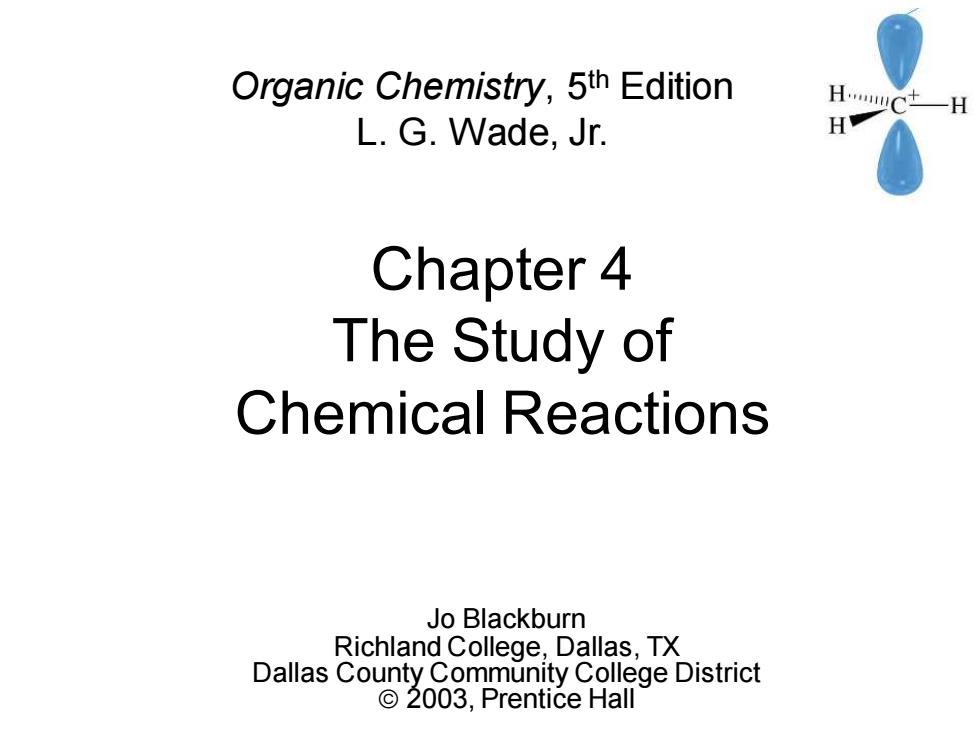
Organic Chemistry,5th Edition HC一H L.G.Wade,Jr. H Chapter 4 The Study of Chemical Reactions Jo Blackburn Richland College,Dallas,TX Dallas County Community College District ©2003,Prentice Hall
Chapter 4 The Study of Chemical Reactions Jo Blackburn Richland College, Dallas, TX Dallas County Community College District © 2003, Prentice Hall Organic Chemistry, 5th Edition L. G. Wade, Jr
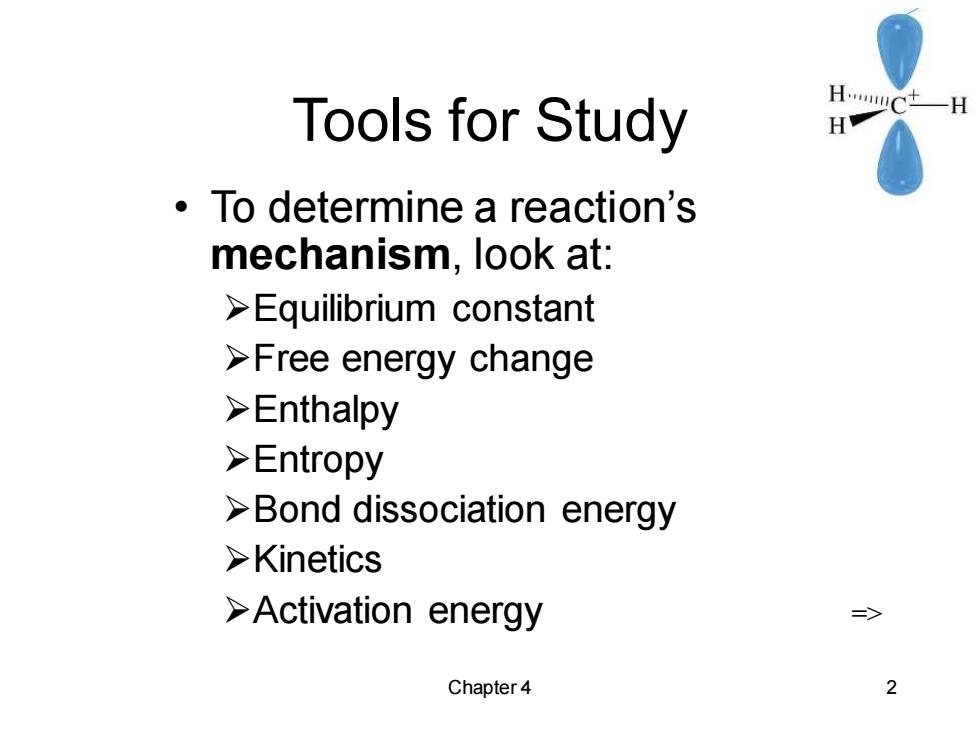
Tools for Study HC+一H H To determine a reaction's mechanism,look at: >Equilibrium constant >Free energy change >Enthalpy >Entropy >Bond dissociation energy >Kinetics >Activation energy => Chapter 4 2
Chapter 4 2 Tools for Study • To determine a reaction’s mechanism, look at: ➢Equilibrium constant ➢Free energy change ➢Enthalpy ➢Entropy ➢Bond dissociation energy ➢Kinetics ➢Activation energy =>
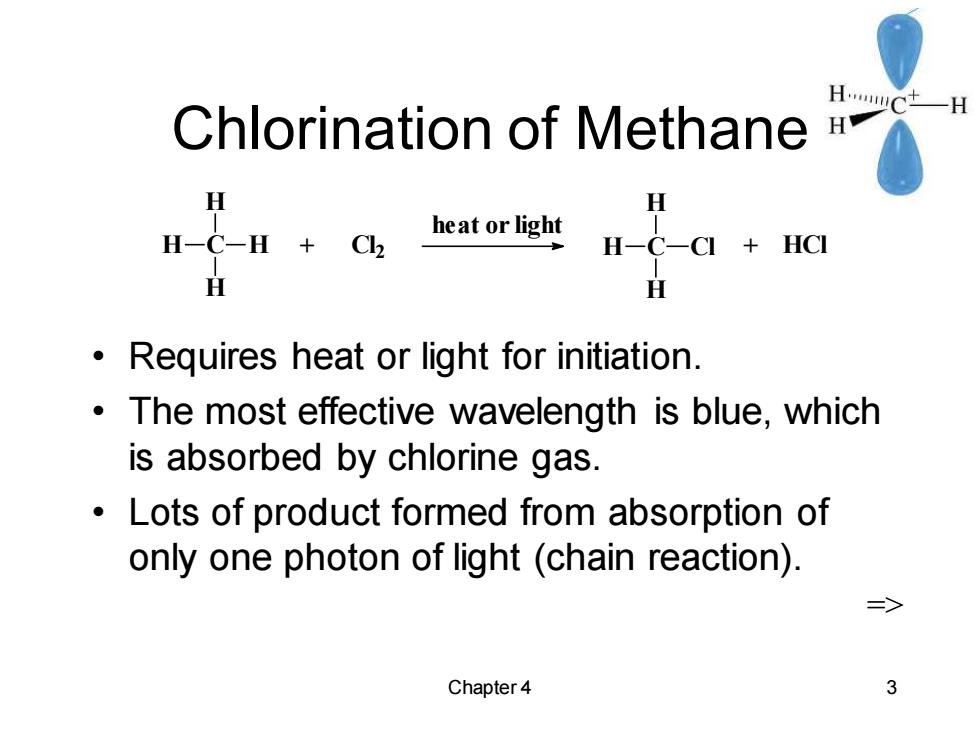
Chlorination of Methane HwC+一H H H H-C-H+Ck heat or light H-C-CI HCI H Requires heat or light for initiation. The most effective wavelength is blue,which is absorbed by chlorine gas. Lots of product formed from absorption of only one photon of light(chain reaction). Chapter 4 3
Chapter 4 3 Chlorination of Methane • Requires heat or light for initiation. • The most effective wavelength is blue, which is absorbed by chlorine gas. • Lots of product formed from absorption of only one photon of light (chain reaction). => C H H H H + Cl 2 heat or light C H H H Cl + HCl
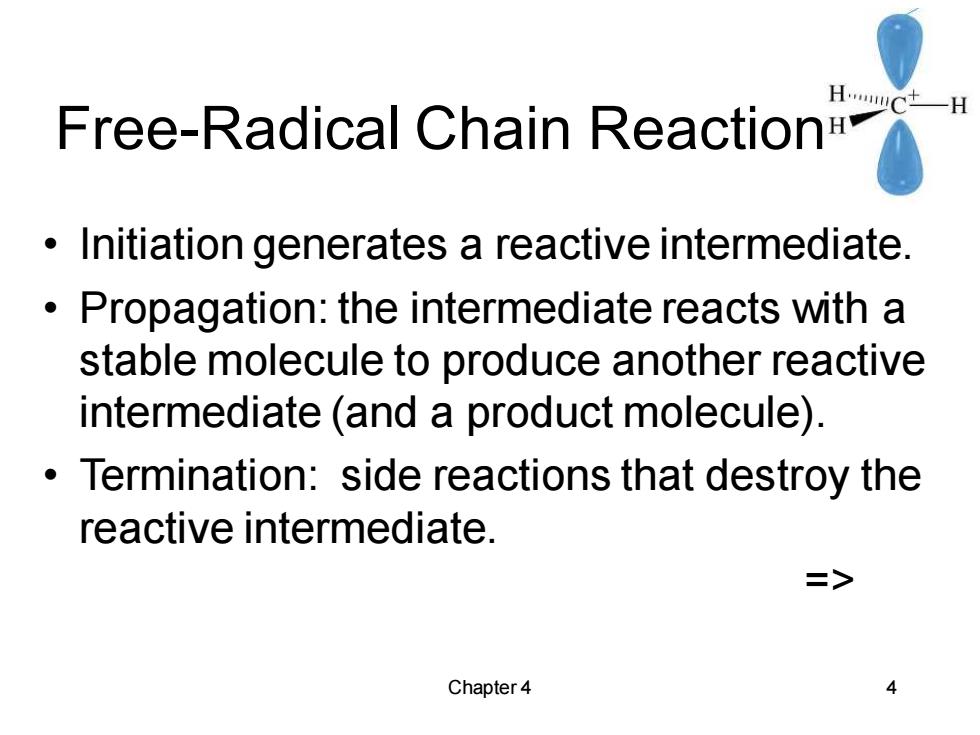
HC一H Free-Radical Chain Reaction Initiation generates a reactive intermediate. Propagation:the intermediate reacts with a stable molecule to produce another reactive intermediate(and a product molecule). Termination:side reactions that destroy the reactive intermediate. > Chapter4 4
Chapter 4 4 Free-Radical Chain Reaction • Initiation generates a reactive intermediate. • Propagation: the intermediate reacts with a stable molecule to produce another reactive intermediate (and a product molecule). • Termination: side reactions that destroy the reactive intermediate. =>
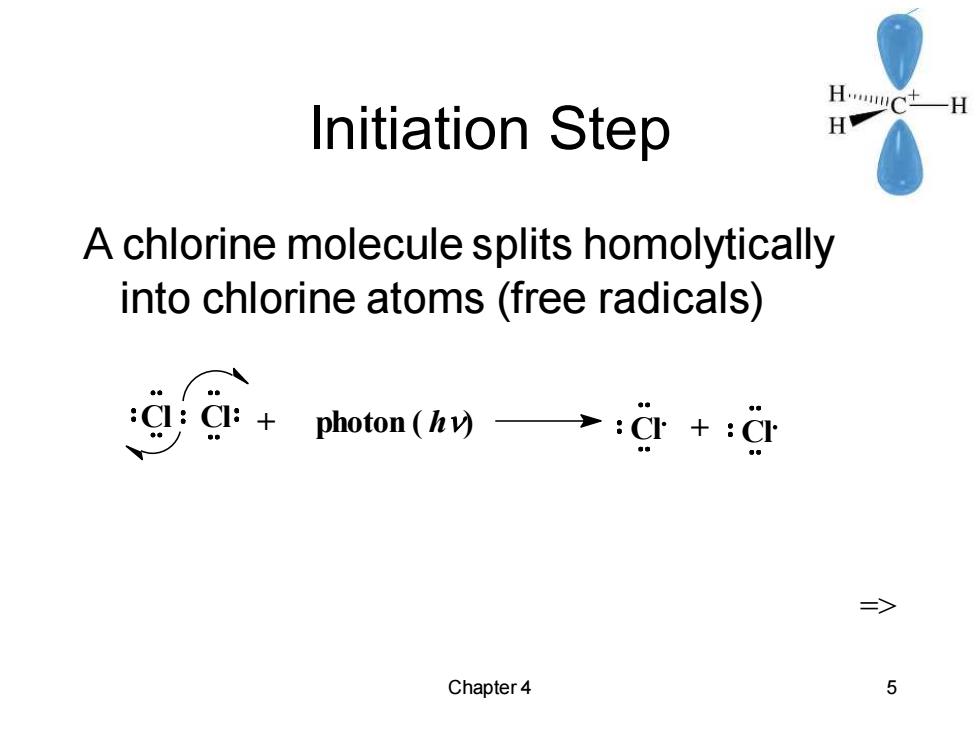
Initiation Step HC一H H A chlorine molecule splits homolytically into chlorine atoms (free radicals) gg:+photon(hy→:g+:d 三> Chapter 4 5
Chapter 4 5 Initiation Step A chlorine molecule splits homolytically into chlorine atoms (free radicals) => Cl Cl + photon ( h) Cl + Cl
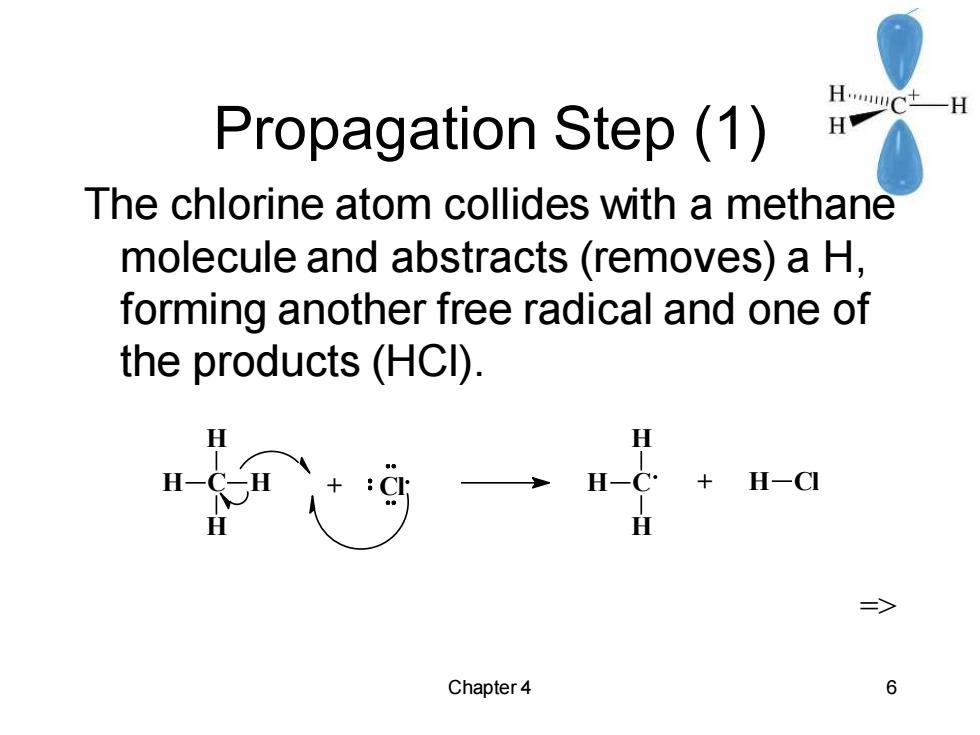
HCtH Propagation Step (1) H The chlorine atom collides with a methane molecule and abstracts (removes)a H, forming another free radical and one of the products(HCI). H H-C H-CI => Chapter 4 6
Chapter 4 6 Propagation Step (1) The chlorine atom collides with a methane molecule and abstracts (removes) a H, forming another free radical and one of the products (HCl). C H H H H + Cl C H H H + H Cl =>
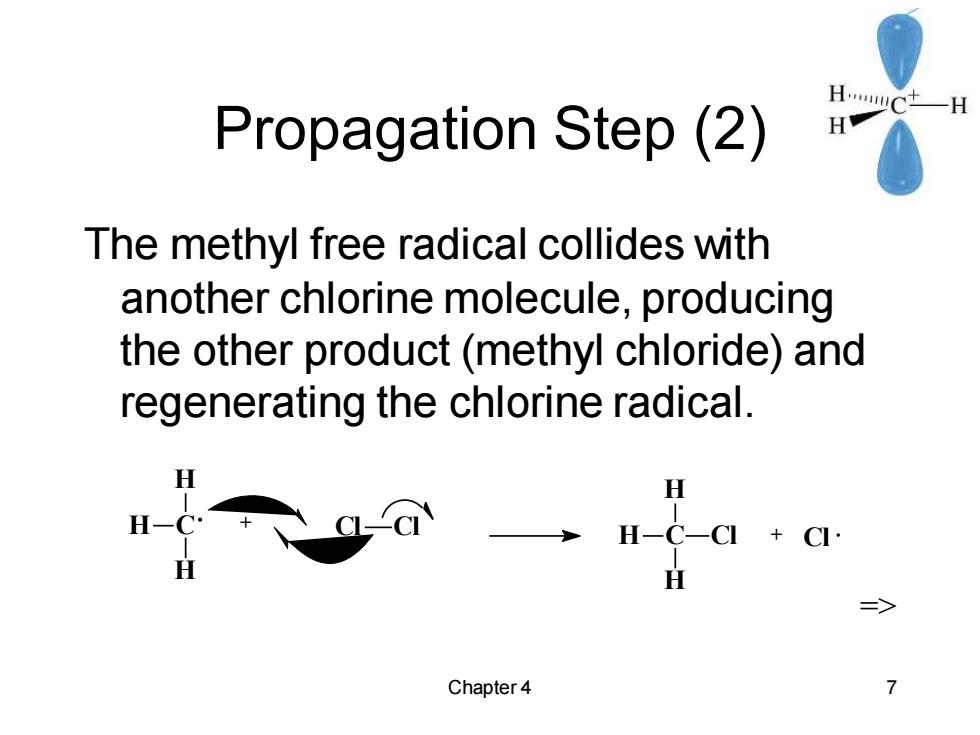
HC -H Propagation Step(2) H The methyl free radical collides with another chlorine molecule,producing the other product(methyl chloride)and regenerating the chlorine radical. H H-C-CI CI H 三> Chapter 4
Chapter 4 7 Propagation Step (2) The methyl free radical collides with another chlorine molecule, producing the other product (methyl chloride) and regenerating the chlorine radical. C H H H + Cl Cl C H H H Cl + Cl =>
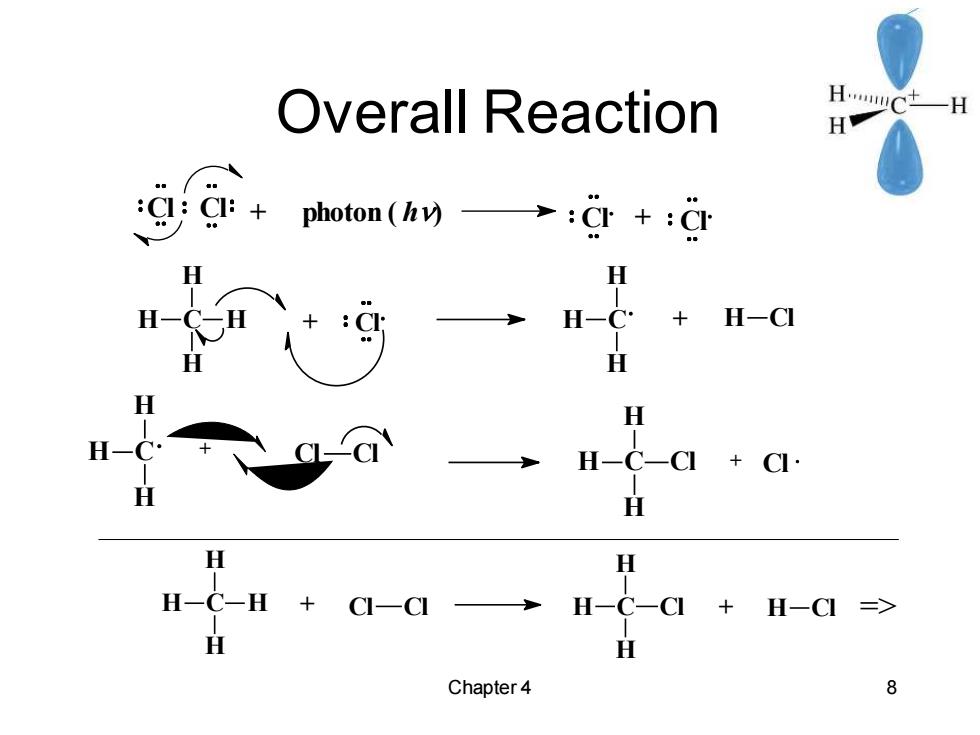
Overall Reaction H.muc -H H :CI:Cl:+photon (v):CI+CI +H-CI H H-C H H -H+C-CI H- +H-C => H Chapter 4 8
Chapter 4 8 Overall Reaction C H H H H + Cl C H H H + H Cl C H H H + Cl Cl C H H H Cl + Cl C H H H H + Cl Cl C H H H Cl + H Cl => Cl Cl + photon ( h) Cl + Cl
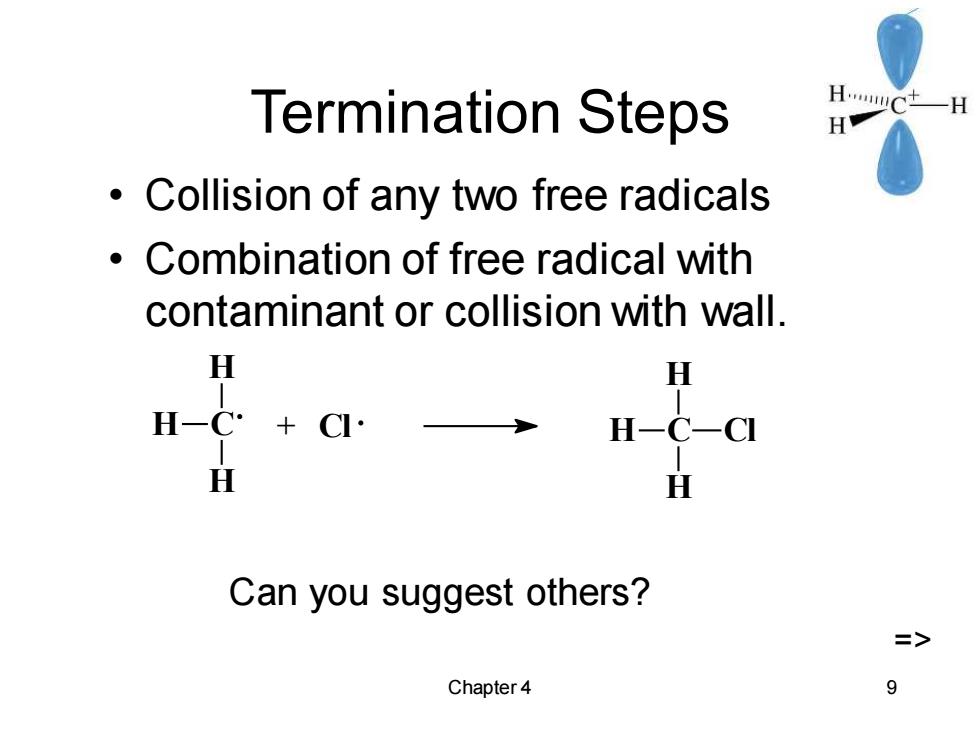
Termination Steps HwC+一H H Collision of any two free radicals 。 Combination of free radical with contaminant or collision with wall. H H H一C: +CI- H-C一C H H Can you suggest others? > Chapter 4 9
Chapter 4 9 Termination Steps • Collision of any two free radicals • Combination of free radical with contaminant or collision with wall. C H H H + Cl C H H H Cl Can you suggest others? =>
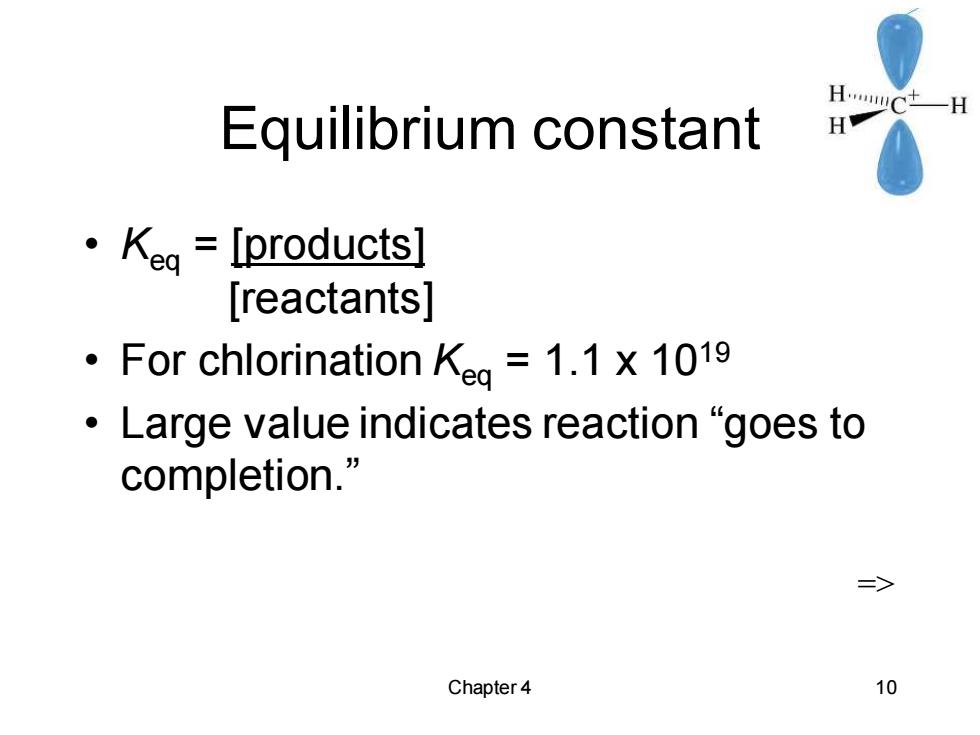
HCtH Equilibrium constant H ·Keg=[products] [reactants] For chlorination Keg 1.1 x 1019 ·Large value indicates reaction“goes to completion. => Chapter4 10
Chapter 4 10 Equilibrium constant • Keq = [products] [reactants] • For chlorination Keq = 1.1 x 1019 • Large value indicates reaction “goes to completion.” =>